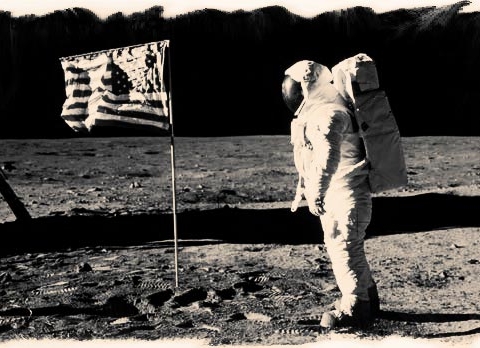
by Robert Calin-Jageman and Jeffrey Beall
Society benefits from the results of scientific research in many ways. Scholarly research supports expert testimony in courts of law, medical research is translated into improvements in clinical care, and the media report on new and interesting research and how it may impact our lives.
So, what’s at stake when a media outlet cites information from a journal published by a predatory publisher?
This was the case recently when the Chronicle of Higher Education wrote a glowing summary of a research paper published in Psychology Research, a scholarly journal published by the questionable publisher David Publishing.
David Publishing is a Chinese outfit that purports to operate out of Southern California. Its poorly-run website is extremely slow and difficult to navigate. Also, its journals lack credible editorial boards and publish articles of dubious quality — it’s a vanity press. As of this writing, there is no editorial board listed for the journal.
One of the ironies of predatory journals is that they sometimes contain articles that seem sound. This occurs because some serious researchers are fooled into thinking the publisher is a high-quality one, or they don’t evaluate its quality sufficiently.
So, should journalists cite material from predatory journals? Should they pick out the potentially good from a sea of obvious bad? Or should journalists refrain entirely from reporting on research from predatory journals?
Complete embargo seems to be a wise choice for several reasons. First, it doesn’t seem that predatory journals conduct meaningful peer review for any of their articles. Thus, all their articles could include errors of analysis or interpretation that would have been corrected by expert reviewers. Is that really such a big deal? Probably. After all, even high quality open-access journals like PLos ONE reject about 30% of submissions. For the 70% that make it through it’s usually with substantial improvement through feedback and revision. Thus, even though some articles in a predatory journal can seem sound, it is probably best to consider their real quality an unknown. Given this, journalists would probably be better off avoiding predatory journals in favor of the abundance of true peer-reviewed research reported each week.
Another reason for the popular press to completely avoid predatory journals is to keep from adding fuel to the fire.
Secondary coverage can only add to the veneer of credibility that predatory journals seek to manufacture, enabling them to dupe even more hapless victims.
It’s surprising to see a respected source like the Chronicle being sloppy enough with sourcing to report on an article from a predatory journal. It’s a stroke of good luck for the journal, but their gain may be the Chronicle’s loss.
There is also the increasing problem of articles in high-quality journals citing research published in predatory journals, and we hope to study this more in the coming year.
By: Jeffrey Beall
Follow on Twitter
Source: Scholarly Open Access
Comments:
Shawn says:
January 8, 2013 at 1:04 PM
Any type of embargo is not practical. First, there is no standard that you can enact to determine which publication is vanity press. You can define vanity press as “Pay to publish,” but it is very difficult to prove the lack of peer review and/or editorial boards. Second, while there are clear cut examples, the trend is definitely heading toward heavily disguised operations. Even seasoned serials professionals have a hard time figuring these publishers/publications out sometimes. Finally, a real journalist that did his/her homework would have also cited the fact that the publisher is based in China and have been labelled as a vanity press.
I think that’s the proper way to handle these types of situation.
Bob Calin-Jageman says:
January 22, 2013 at 9:02 AM
You guys are giving journalists way too much credit. It’s not that they are being fooled by predatory publishers. It’s that they don’t care if the sources is disreputable.
When I contacted the journalist who wrote up the CHE story, he was fully aware the source was predatory. But, he replied, in this case the primary authors had told him there was peer review, so he felt it was fine.
I contacted one of the senior editors at CHE to ask about this. He concurred. He felt that the poor quality of the journal doesn’t reflect on the specific article at all, that this would be spreading guilt by association. He argued that there policy is simply to quote and cite the sources, which they had did in this case. The fact that the journal had no editorial board to conduct the claimed peer review did not impress him. The fact that the authors of the primary paper would no longer respond to emails about it didn’t worry him.
So – journalists aren’t getting tripped up. They just simply don’t have a stake in this fight–a source is a source is a source for them. I think that’s what should change–fooled is fine, but they really shouldn’t knowingly use a predatory journal article as a source.
Bob Calin-Jageman says:
January 22, 2013 at 9:05 AM
p.s. here is a bit of my correspondence with CHE:
I asked them:
Does the CHE article meet your standards for journalism? Does it violate principles of journalistic norms, such as “don’t cite dubious sources” or “check your sources”? It is *this* issue which I believe deserves comment and response.
I would argue, as I did in the letter, that a journal with no academic process transmits its dubious status to all its articles. Therefore, it is not good journalistic practice to rely on articles from such sources. If CHE agrees, I would urge you to flag, amend, or retract the article for falling below CHE’s standards for quality. If CHE disagrees, I’d like to know why (e.g. perhaps CHE journalists are sufficiently astute to judge the scientific quality of an article regardless of its context).
And CHE editor Lawrence Biemiller replied:
I’m not the final arbiter of our journalistic standards, but my gut feeling—as a 32-year employee of the paper—is that yes, this article meets our standards. It reports accurately on credible research of interest to our readers. The fact that this research was published in a journal of questionable integrity may mean it’s time for a follow-up article on predatory journals, but I don’t myself accept your blanket guilt-by-assocation approach. As our earlier article on such journals noted, legitimate, well-intentioned scholars are being taken in by these journals, but I don’t think that means we have to ignore all their research. I know Dan and his editor, Sara Hebel, have talked over your points and don’t see that this article requires the retraction you sought.
As for not quoting dubious sources, any journalist tries to do that, but it’s a slippery slope. I myself have been having trouble believing anything that has come out of the mouth of the Speaker of the House of Representatives about the fiscal cliff, but I have a number of friends who are equally suspicious—far more suspicious, actually—of anything they believe the president has said about guns. So where does that leave us?
—Lawrence Biemiller
Ogwo says:
January 9, 2013 at 2:25 PM
I agree entirely with Shawn.
Robin Hood says:
January 12, 2013 at 1:00 PM
Exactly Shawn. That is why the scientific community is now in serious trouble, I believe. Journalism and scientific journalism is, in my opinion, already so biased and opinionated, that it actually doesn’t matter to the academic community. If we look at main-stream US “journalism”, it is evident that each one is pushing for a socio-political agenda. So, scientists should always be suspicious of journalism overall, because most journalists are not scientists and thus have no understanding, in fact, of how it works. The underlying risks that Jeff is referring to are, however, more important for scientists. And allow me to explain using an example. Imagine a scientist does a search on Google or Yahoo for a toic, e.g. salmon eggs. Maybe some OA PDFs appear in the first 2-3 pages of Yahoo or Google, and, because the scientist is too lazy, or too irresponsible to conduct a thorough search on “respected” data-bases, or maybe because the scientist is unaware of the predatory nature of many OA operations, that predatory paper on salmon eggs slips into the reference list of a paper that might be eventually published by a non-predatory publisher. Suddenly, you have a situation where valid publishers, at least those that abide by fairly well established industry codes, are actually supporting predatory OA publishers by “validating” them in reference lists. Thisis the immediate imapct. The mid-term impact which is now becoming evident over 2006-2013, is that papers from predatory publishers can, in the case of one publisher, now start to account for as much as 15% of all references in reference lists (suing Jeff’s lists as the industry standard). Most of these predators have a long-term vision, and if you and others haven’t figured this out yet, then you will never figure it out. Predators are seeking, as a long-term goal, to be massively referenced in as many journals as possible. Then, along comes Thomson Reuters’ spiders and automatic bots, which are simply robots that scour the internet and data-bases in search of key-words, and develop an Impact Factor based on number of times a journal is referenced. Before you know it, clearly predatory publishers, with unqualified editor boards, fraudulent actions, rubbish and non-sensical papers and no scientific quality, quality control or transparency, suddenly appear with an Impact Factor. This is, in the fraudster’s eyes, the ultimate validation. And we, the scientific community, give it to them on a platter. Thus, the first thing that needs to take place is EXACTLY an embargo on clear predators, and their papers should be BANNED from being included in reference lists of valid journals. Of course, many “valid” publishers and journals are themselves predators, in different ways, so soon it will be difficult to differentiate valid from invalid predators, and OA from print predators. Science is in crisis, no doubt. But radical measures like banning and embargos might be the only way to force the hands of fraudsters who only have one objective in mind: profit (by hook or by crook).





